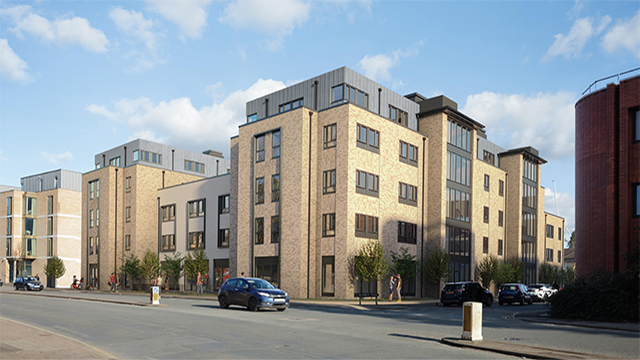UK cities top most expensive European office fit-out list
Key UK cities top the list of the most expensive European regions to fit out an office as occupier expectations for their workplace continue to increase following the Covid-19 pandemic.
Data from Cushman & Wakefield shows that fit-out costs across Europe have risen by an average of 9% (in Euro currency) over the last year with high-quality fit-outs now averaging €2,214 (£1,944) per sq m all-in. This includes furniture, audio visual, professional fees and contingency on the total costs associated with a potential internal fit-out project.
London, Manchester and Birmingham make up the top three most expensive spots, followed by Hamburg and Glasgow. Munich, Frankfurt and Berlin also feature in the top 10 (see table). The research covers 25 key cities across Europe.
Key UK cities top the list of the most expensive European regions to fit out an office as occupier expectations for their workplace continue to increase following the Covid-19 pandemic.
Data from Cushman & Wakefield shows that fit-out costs across Europe have risen by an average of 9% (in Euro currency) over the last year with high-quality fit-outs now averaging €2,214 (£1,944) per sq m all-in. This includes furniture, audio visual, professional fees and contingency on the total costs associated with a potential internal fit-out project.
London, Manchester and Birmingham make up the top three most expensive spots, followed by Hamburg and Glasgow. Munich, Frankfurt and Berlin also feature in the top 10 (see table). The research covers 25 key cities across Europe.
The 9% increase is broadly in line with the peak rate of inflation encountered in the UK and Euro area. High fit-out costs in the UK and Germany are being further driven by elevated expectations in these regions in terms of design sophistication, technology solutions and quality of fit-out.
Cushman & Wakefield chair of project and development services EMEA Nic Wilkinson said: “Three years on from the COVID-19 pandemic, delivering office fit-outs that reflect current working strategies has never been higher up the agenda.
“Corporates are taking huge strides in advancing workplace strategies and the importance now placed on sustainability and DE&I criteria cannot be understated as more and more firms pivot towards accountable goals in this area.”
Over the past 12 months the primary issue affecting fit-out costs has been surging inflation driven by significant supply-demand imbalances resulting from stressed supply chains, tight labour markets and the conflict in Ukraine.
Looking ahead, the report says that supply chain stress continues to be resolved, but there are still bottlenecks for specific products, mainly electronics, and labour costs remain high. Inflation in the euro area is forecast at 6.2% in 2023 but is then expected to slow to 2.7% in 2024.
These factors mean that input costs are likely to remain elevated in the near term and are likely to result in construction contractors remaining risk averse and including greater safety provisions to mitigate the current volatile conditions.
However, the economic slowdown has resulted in a more cautious approach to capital expenditure by occupiers which, together with the current trend of generally downsizing office footprints, means the size of the market has shrunk. In turn, this is leading to increased competition to win projects and is therefore placing downward pressure on tender pricing as margins are shaved further.
Another key factor affecting fit-outs is obsolescence, with Cushman & Wakefield recently warning that 76% of European office stock faces obsolescence by 2030 as a combination of changing work patterns, occupier demand, increasing legislative action from European governments around minimum sustainability standards, as well as an uncertain economic backdrop that sees stock misalign with demand.
Wilkinson said that best-in-class fit-outs therefore need to consider five key factors:
Workplace strategy
Change management
Sustainability
Procurement
Technology
Wilkinson said: “Half of the building stock across Europe is over 30 years old and just 14% has been built or substantially modernised in the last 10 years.
“Over the life of an office building, there may be as many as three or four office fit-outs, and with legislative requirements on sustainability becoming more acute, many landlords need to take action on how the environmental costs measure up against the embodied carbon in the building.
“Occupiers simultaneously need to factor in high all-in costs to accommodate technology and sustainability improvements, though payback periods, especially for sustainability efficiencies, have shortened considerably.”
To send feedback, e-mail julia.cahill@eg.co.uk or tweet @EGJuliaC or @EGPropertyNews
Photo © Planet Observer/UIG/Shutterstock











